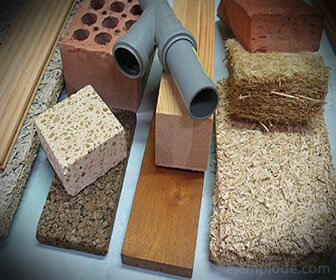Material Characteristics
Science / / July 04, 2021
Material is any element, physical or theoretical, necessary to build buildings or make the objects that we use daily. A material is all that capable of being transformed and / or combined to achieve a final product, capable of satisfying a human need. According to the way of obtaining them, the materials are classified into: natural and artificial.
The natural materials are those substances or elements that can be obtained directly from the natural environment. To have them within reach, simply collect them from their source using simple tools. Among them are:
- Wood, fruits, vegetables, bones, skins, hair, teeth, feathers, oils, fats, seeds.
The artificial materials They are those that require a previous preparation or transformation, either physical or chemical. If they are used directly, it will be impossible to take advantage of them and they will not give the desired result. It takes human intervention and automated processes to generate them. Among them are:
- Plastics, gases, metals, fabrics, glasses.
Material characteristics

- Density: It is the physical property of all substances that indicates the amount of matter in each unit of volume. It is generally measured in grams per cubic centimeter (g / cm3) or kilograms per cubic meter (Kg / m3). Metals are some of the densest materials, and gases are the least dense.
- Ductility: It is the physical property that indicates the ability of solids to deform to form thin wires. This is most noticeable in metals such as copper, gold, silver, and aluminum.
- Hardness: It is the physical property of solids that indicates the resistance that their surfaces oppose to scratches. Among the harder materials are tungsten carbide and diamond.
- Elasticity: Elasticity is the ability of some solid materials to return to its original form, after having received a deformation stress.
- Melting point: It is the temperature at which solid materials begin to convert to the liquid state, by heating. It is expressed in degrees, depending on the system of units being used, either international (Celsius ° C, Kelvin K) or English (Fahrenheit ° F, Rankine R).
- Boiling point: It is the temperature at which liquid materials begin to convert to the state of vapor, by heating. It is expressed in degrees, depending on the system of units being used, either international (Celsius ° C, Kelvin K) or English (Fahrenheit ° F, Rankine R).
- Electric conductivity: It is the ability of all materials to carry an electric current through its internal structure. Metals like gold, copper, and silver are the best electrical conductors. They are followed by electrolytic solutions, made up of water and ionic substances.
- Electrical isolation: It is the characteristic of some materials that have very low or no electrical conductivity, which allows them prevent the passage of electric current over another side. Materials like polyethylene and polypropylene are very good electrical insulators.
- Thermal conductivity: It is the ability of all materials to transport energy in the form of heat through its internal structure. Metals like gold, copper, and silver are the best thermal conductors.
- Thermal isolation: It is the characteristic of some materials that have very low or no thermal conductivity, which allows them avoid the passage of heat over another side. Materials like polystyrene and polyurethane are very good thermal insulators.
- Plasticity: It is the property of solid materials that allows them to yield to deformation efforts, to become articles with a certain shape, which meets a need.
- Tenacity: It is the property of solid materials that indicates their resistance to shocks and the application of forces.
- Compressibility: It is the property of gaseous materials that indicates their ability to cover a smaller volume, either by cooling or by the application of pressure (also called compression).
- Durability: To form part of a good quality final product, the materials must comply with the characteristic of being durable, that is, they must withstand a good time without deteriorating. This ensures that the customer receives good service.
- Adhesiveness: It is the property of some materials that indicates their ability to bond against another surface, or fix two surfaces to each other, providing great resistance so that the user has a good experience. Adhesive materials are cement, cyanoacrylate, and white glue.
- Permeability: Permeability is the property of solid materials that indicates how much water or other liquid can pass through its surface to wet it inside. The materials that prevent the entry of liquids to its internal structure are called raincoats.
Types of materials:
- Electrically conductive materials
- Magnetic Materials
- Semiconductor Materials
- Insulating materials
- Composite materials
- Construction materials
- Explosive Materials
- Flammable materials
- Reactive Materials
- Superconducting Materials
- Toxic materials

